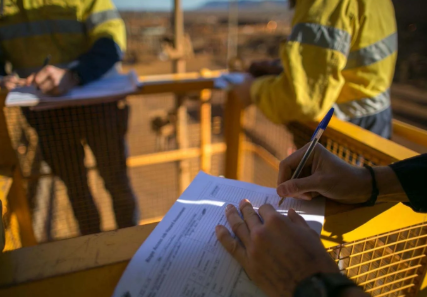Building Clean: Best Practices for Eco-Friendly Energy Projects
As the demand for energy continues to rise, so does the responsibility to meet that need in a sustainable, environmentally conscious way. While renewable energy sources like solar, wind, and hydro power are inherently cleaner than fossil fuels, the construction and operation of energy projects still have the potential to negatively impact ecosystems, communities, and natural resources. That’s why integrating eco-friendly practices throughout the lifecycle of an energy project—from planning to decommissioning—is critical for reducing its ecological footprint.
1. Prioritize Site Selection with Minimal Impact
Selecting an appropriate site is a critical foundation for any eco-friendly energy project. Engaging an ecological consultant early in the planning phase ensures that environmentally sensitive areas—such as wetlands, wildlife habitats, and forested regions—are identified and avoided, minimizing ecological disruption.
Comprehensive Environmental Impact Assessments (EIAs), guided by expert input, help uncover potential risks and shape effective mitigation strategies. Prioritizing previously developed or degraded sites—like old industrial zones or brownfields—not only reduces the pressure on untouched ecosystems but also promotes the sustainable reuse of land with existing infrastructure.
2. Design with Efficiency in Mind
Eco-conscious design plays a vital role in minimizing environmental impact. Incorporate features that promote energy efficiency, reduce material waste, and optimize land use. For example:
- Compact layouts reduce land disturbance.
- Modular components streamline construction and reduce waste.
- Multi-use infrastructure, such as solar farms combined with agricultural land (agrivoltaics), maximize utility while preserving land use.
Utilizing Building Information Modeling (BIM) and other digital tools can also enhance efficiency during the design phase by predicting environmental impacts and refining plans before construction begins.
3. Choose Sustainable Materials and Suppliers
Every component of an energy project, from turbines to concrete foundations, leaves an environmental footprint. Opting for sustainable, low-impact materials can significantly reduce emissions and pollution. Look for:
- Locally sourced materials to cut down on transportation-related emissions.
- Recycled and recyclable materials to reduce resource extraction.
- Non-toxic, biodegradable construction materials when available.
Also, partner with suppliers who prioritize sustainable practices in their manufacturing and logistics.
4. Implement Low-Impact Construction Practices
Construction is often the most disruptive phase of an energy project. However, adopting responsible practices can help mitigate short- and long-term damage. These include:
- Erosion and sediment control to protect water bodies from runoff.
- Noise and dust suppression techniques to minimize disturbance to local communities and wildlife.
- Efficient machinery and reduced on-site idling to lower carbon emissions.
Hiring trained contractors who understand and adhere to sustainable practices ensures better implementation of these strategies.
5. Protect and Restore Biodiversity
Even well-planned projects can disrupt natural habitats. To counteract this, developers should implement biodiversity protection plans. This can involve:
- Wildlife corridors that allow safe animal migration.
- Habitat restoration efforts post-construction.
- Ongoing monitoring of local species to ensure populations remain healthy.
Involving local ecologists or partnering with conservation organizations can help guide these efforts effectively.
6. Engage the Community
Sustainable energy projects are not just about the environment—they’re also about people. Engaging local communities early and often helps build trust, gather valuable input, and avoid future conflicts.
Transparency around project goals, environmental protections, and long-term benefits (such as job creation or lower energy costs) fosters support. Incorporating community concerns into project planning can lead to smarter, more sustainable outcomes.
7. Maximize Operational Efficiency
Once an energy project is up and running, continued efficiency should be a top priority. Use real-time monitoring systems to track energy production, identify maintenance needs, and detect inefficiencies. Energy storage solutions—like batteries or thermal storage—can improve reliability and reduce waste.
Regular audits and upgrades over the project’s lifespan ensure that performance stays high and the environmental impact remains low.
See Also: The Future of Cummins Technology in Singapore: Innovations and Developments
8. Plan for Responsible Decommissioning
At the end of an energy project’s life, what happens next matters just as much as what came before. A sustainable approach includes:
- Recycling or repurposing components wherever possible.
- Proper disposal of hazardous materials to prevent soil and water contamination.
- Land restoration to return the area to its original or improved condition.
Including a decommissioning plan from the start demonstrates long-term responsibility and reduces future ecological burdens.
In Conclusion
As the global transition toward clean energy accelerates, it’s essential to ensure that the infrastructure supporting it is just as environmentally responsible as the energy it generates. By embracing sustainable site selection, efficient design, eco-friendly construction, and responsible end-of-life practices, energy developers can reduce their ecological footprint and set a higher standard for the industry.
Building clean isn’t just a choice—it’s a necessity for a healthier planet and a more sustainable future.





